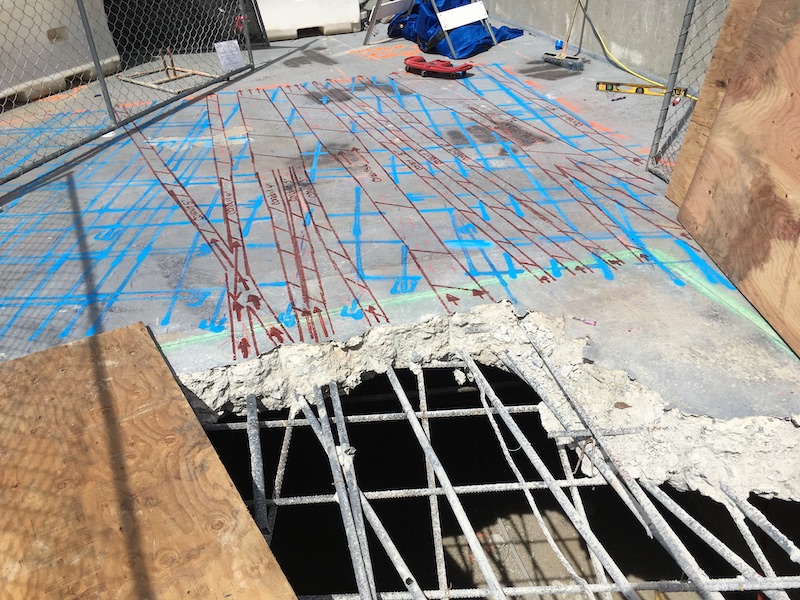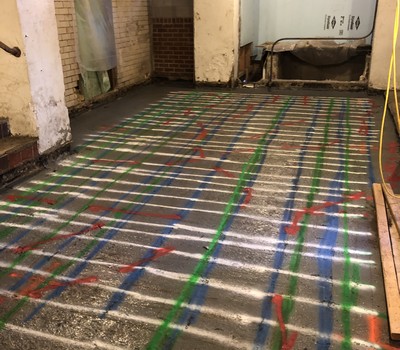Concrete Scanning: A Crucial Action In The Direction Of Making Certain Architectural Integrity and Safety
In the realm of building and construction and framework maintenance, the significance of concrete scanning can not be overstated. By utilizing advanced modern technology and methods, concrete scanning offers as a critical device in guaranteeing that the honesty and safety of buildings and bridges are supported to the highest possible requirements.
Importance of Concrete Scanning
Concrete scanning plays a crucial duty in making sure the architectural stability and safety of buildings and infrastructure tasks. By making use of innovative technologies such as ground-penetrating radar (GPR) and electromagnetic induction, experts can non-destructively inspect concrete structures to find potential problems, gaps, embedded items, and support format. This process allows early detection of abnormalities that could jeopardize the stability of a framework, preventing expensive problems and guaranteeing the safety of residents.
Prior to exploration, reducing, or coring right into concrete, scanning assists identify the accurate places of rebar, post-tension wires, and other ingrained aspects, reducing the danger of unintended hits that might lead to structural weaknesses. In addition, concrete scanning help in quality control by verifying the density of concrete covers and finding any type of discrepancies that might impact the overall longevity of the structure.
Innovation for Concrete Evaluation

Benefits of Early Detection
Timely detection of architectural concerns can considerably alleviate risks and make sure the long life of construction tasks. By identifying prospective troubles early in the building and construction process, stakeholders can take proactive procedures to address issues before they rise into larger and extra pricey troubles. One of the key benefits of early discovery is the prevention of structural failings, which can position severe security dangers and lead to task delays and economic losses.
Moreover, very early detection permits for prompt repair services and maintenance, which can help extend the life expectancy of the structure. By resolving concerns promptly, building and construction teams can avoid costly fixings or perhaps the need for early replacement of structural components. This aggressive technique not only conserves money and time yet likewise enhances the total security and longevity of the building and construction job.
In addition, early discovery Read Full Article can boost job preparation and decision-making by offering stakeholders with beneficial insights right into the problem of the framework. Armed with this details, project supervisors can make enlightened options regarding building timelines, materials, and techniques, leading to a lot more successful and effective task end results.
Guaranteeing Structural Stability
Making certain the structural stability of a building project is extremely important to its safety and durability. Architectural security refers to the capacity of a structure or infrastructure to maintain its form and function under various tons and ecological problems. To achieve this, complete analysis and tracking of the structure are essential. Concrete scanning plays an important function in guaranteeing architectural security by discovering prospective concerns such as gaps, delamination, or reinforcement corrosion that could jeopardize the integrity of the structure gradually.
By utilizing advanced scanning modern technologies like ground-penetrating radar (GPR) and electro-magnetic induction, building specialists can non-invasively check concrete frameworks to determine areas of worry under the surface area. This proactive technique enables the early detection of problems or weaknesses, allowing timely repairs or support to stop architectural failings.
Routine concrete scanning throughout various construction stages and throughout the life process of a framework can assist preserve its security, reduce threats, and make sure the safety and security of owners. By prioritizing architectural stability with concrete scanning, building and construction jobs can enhance their strength and longevity, ultimately adding to better security and durability.
Preventing Vital Failures
Applying regular assessments, such as concrete scanning, can reveal surprise problems like spaces, splits, or corrosion that could jeopardize the honesty of a structure. By utilizing advanced scanning innovations like Ground Permeating Radar (GPR) or Concrete X-ray, engineers can non-destructively evaluate the condition of concrete and recognize weak factors that require reinforcement or fixing.

Conclusion
To conclude, concrete scanning plays a critical role in ensuring structural stability and safety by utilizing sophisticated modern technology for very early discovery of potential concerns. This positive method assists avoid important failings and guarantees the stability of frameworks. It is crucial to prioritize concrete assessment as a basic technique to safeguard the longevity and safety of buildings and facilities.
Concrete scanning plays a vital duty in guaranteeing the architectural honesty and security of structures and infrastructure projects. Furthermore, concrete scanning help in top quality control by confirming the density of concrete covers and detecting any type of inconsistencies that might affect the overall toughness of the framework. Concrete scanning plays an essential duty in making sure structural stability by finding prospective problems such as gaps, delamination, or support deterioration that could endanger the stability of the structure over time.

In final thought, concrete scanning plays a vital function in making certain structural honesty and security by utilizing sophisticated modern technology for very early detection of visit possible concerns.